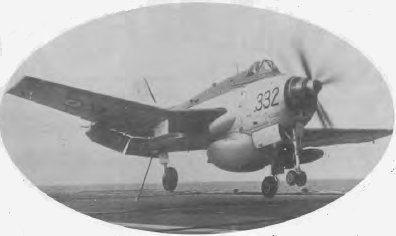- Author
- van Gelder, Commander John RAN (Rtd)
- Subjects
- Naval Aviation
- Tags
-
- RAN Ships
- HMAS Melbourne II, HMAS Sydney III
- Publication
- June 2001 edition of the Naval Historical Review (all rights reserved)

Some time ago, whilst having a drink in the bar of the local yacht club, I met a man whom I had never met before. In general conversation on learning that I had been a Fleet Air Arm pilot he said “… but that was a license to kill yourself, wasn’t it?” It was a ridiculous remark, however, I pondered later whether this may have been a general perception by people who should have known better.
By the time a pilot carries out his first deck landing he has undergone at least two years of fairly intensive academic and flying training and, in the process, seen about fifty percent of his contemporaries fall by the wayside for various reasons. Before arriving at the aircraft carrier the final intensive flying training schedule is devoted to ADDLs, or Airfield Dummy Deck Landings. This is the practice of being directed in the landing approach by a batsman. In my particular training I recorded 212 ADDLS in Fairey Firefly aircraft at an airfield in Northern Ireland before my first deck landings on that great old aircraft carrier HMS Illustrious. By no stretch of the imagination could one suggest that we were undertrained, nor that we were practising to “kill ourselves”.
Flying from straight deck carriers such as HMS Illustrious or HMAS Sydney and being “batted on” did have an element of risk and there were not really much margin for error. However, if you missed picking up one of the nine arrester wires there was always the barrier to bring you to a stop. It was often said that there were two types of naval aviators – those that had been into the barrier and those that were going to!
Strangely enough, one of the more difficult procedures I found operating from HMAS Sydney was taxying the aircraft out of the deck park in order to get to the catapult. With the wings folded the aircraft always felt top heavy and inevitably the ship would be rolling whilst turning into wind, so at one moment one would be taxying uphill and the next moment going downhill with some hapless aircraft handler frantically directing you to slow down before colliding with the island.
Take off on the catapult was quite straight forward. Once the cockpit checks were done and the engine run up to take off power, the Flight Deck Officer’s green flag went down and you were going off the sharp end of the ship, coming ready or not. The old hydraulic catapult gave quite an energetic kick initially and then slowed down. In fact on most occasions one could have the old Firefly airborne before reaching the end of the catapult.
Landing on was a different kettle of fish; you had to do it all by yourself with the aid of the batsman. The important thing was to set up the aircraft on the approach in the right attitude with wheels, hook and flaps down at the correct airspeed (92 knots for the Firefly) and follow signals from the batsman. The hardest part of this procedure was to ignore the movement of the flight deck if the ship was pitching to any extent. Once over the round-down (the after end of the flight deck), and providing you had the “Roger” signal from the batsman, followed by the “cut” signal, all one had to do was carry out a nice, gentle, flared landing in amongst the arrester wires and there you were – shaking, but safe at home! I always knew I was roughly in the right position for the “cut” if the batsman’s left arm disappeared between the fifth and sixth exhaust stubs on the port side.
By the late 1950s everything changed. With the acquisition of HMAS Melbourne we had an aircraft carrier with an angled flight deck, a mirror landing system, a steam catapult and new aircraft. One thing that did not change was the sporting element associated with the whole operation since now we had the opportunity to demonstrate how clever we were by flying throughout the night as well as by day. Whoever said “the more light, less fright” was absolutely spot on.




